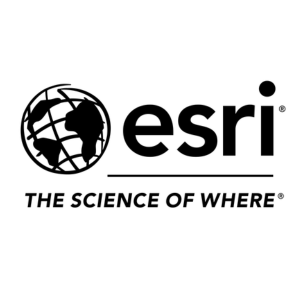- About NAEP
- Membership
- NAEP Chapters
- Working Groups
- Events and Programs
- Awards/Scholarships
- Resources
|
President’s Award: Project Name: Comprehensive Ecosystem-Based Amendment 1 for the South Atlantic Region Presented to: South Atlantic Fishery Management Council: David Cupka, Duane Harris, Myra Brouwer and Roger Pugliese. National Marine Fisheries Service: Karla Gore The Comprehensive Ecosystem-Based Amendment 1 implemented management measures that allow for the protection of over 23,000 square miles of pristine, deepwater coral ecosystems – one of the largest in the world. These areas are protected through the creation of deepwater coral habitat areas of particular concern in which bottom damaging fishing gear is prohibited. Allowable fishing zones for the golden crab and deepwater shrimp fishery were also created allowing for fisheries to continue in their historic fishing grounds without damage to the coral resource. The project required extensive coordination and cooperation among a host of participants, indicative of the complexities in protecting such a valuable natural resource.
Best Available Technology Award: Project Name: City of Marco Island Aquifer Storage and Recovery Well Field Presented to: Cardno Entrix, Lloyd E. Horvath, P.E. and Mark S. Pearch, Ph.D. and the City of Marco Island The City of Marco Island struggled with severe limitations of potable water due to the absence of fresh water aquifers beneath the island. Water supplies from desalination of brackish water were inadequate and costly. Cardno ENTRIX and the City of Marco Island developed a unique aquifer storage and recovery system (ASR) to capture excess wet-season surface water for storage in a brackish deep water aquifer for later recovery and use in the dry season. The ASR system recovers up to 1.5 billion gallons of fresh water annually. The recovered water is then treated by conventional softening for potable use. The ASR system, developed in several stages at an overall cost of approximately $10 million, proved less costly than alternatives. However, it had to overcome new technical obstacles. There was no record of successfully and economically implementing ASR for a potable supply system emanating from an aquifer containing such highly brackish native water. The native brackish water had to be effectively flushed from the aquifer for storage of fresh water and later recovery. The ASR system uses partially treated surface water as its source water, allowing only 4 percent mixing of with brackish water when recovered from the aquifer. The ASR system is much more efficient than typical ASR wells and provides a unique solution to properly and sustainably supply potable water for the City of Marco Island, Florida.
Conservation Programs Award: Project Name: All American Canal Lining Project Presented To: Imperial Irrigation District: Michel D. Remington, Vikki Dee Bradshaw; U.S. Bureau of Reclamation; All American Canal Lining Coordinating Committee: Van Tenney, Chairman; Michael L. King, Imperial Irrigation District; Dave Fogerson, San Diego County Water Authority. The Imperial Irrigation District implemented the All American Canal Lining Project through exceptional cooperation among project partners, the Bureau of Reclamation, San Diego Water Authority, and the California Department of Water Resources. The project conserves over 67,000 acre-feet of water per year, a portion of which is directed to the Band of Mission Indians and other local entities in northern San Diego County. Innovative mitigation measures include: cultural resource survey and protection; wetland and desert riparian habitat creation; provisions for flat-tailed horned lizard habitat, fishery improvement and monitoring of large mammals. Most importantly, during construction extensive coordination among federal agencies, including the Border Patrol, recreationists, and on-site workers ensured that the established mitigation measures were efficiently and effectively implemented.
Education Excellence Award: Project Name: Maricopa County Dust Abatement Handbook and Field Guide Presented to: Maricopa County Air Quality Department The Maricopa County Air Quality Department enforces air quality regulations within Maricopa County, Arizona. Reducing fugitive dust is a high priority in that dust is one of the county’s largest sources of air pollution and construction activity is one of the largest contributors. The department focused on helping citizens understand and meet regulatory requirements through involvement, education, and guidance. The Dust Abatement Handbook, is an illustrated, comprehensive handbook that explains requirements in laymen’s terms and provides hands-on methods for control. In addition, the department developed the Dust Abatement Field Guide for the Construction Industry. This brief, illustrated “back-pocket” tool describes common situations when fugitive dust may be generated and provides real world methods to control dust on the jobsite. Both documents were developed based on public input and assisted by a stakeholder working group. With such help, the department was able to translate complex regulatory language into clear, easy to understand terms, provide insight into how regulations are enforced, and offer helpful hints for compliance.
Environmental Management Award: Project Name: CEMEX Lyons Cement Plant “Beyond Compliance Program” Presented To: Cemex Lyons Team CEMEX Lyons Cement Plant approach to production is defined by its holistic environmental “Beyond Compliance Program.” This Program integrates environmental compliance and conservation, land restoration, and wildlife enhancements at every level of the plant and quarry operations. The program reduces adverse environmental impacts in all media, raises employee awareness and actions, and appropriately reclaims needed land. The CEMEX Lyons plant implements energy savings each year of 129,640 MMBTU of thermal energy and decreased greenhouse gas emissions near 13,000 tons of CO2. The total electrical energy saved per year is near 5.52 million kWh – an amount sufficient to light 550 American homes and avoid greenhouse gas emissions equivalent to approximately 4,100 tons of CO2. In addition, air emissions are reduced by 35%, significantly below permitted limits. The facility eliminated the use of hazardous solvents, found alternatives to reuse materials, reduced the footprint of the facility and operations, and restored areas to native prairie. The projects and programs instituted creative and novel approaches to environmental issues such as energy efficiency, solved problems concerning reductions in emissions, and created and funded projects to improve land for long-term sustainability and wildlife habitat.
Environmental Stewardship Award: Project Name: General Waste Products, Inc., Main Yard Site Remediation Project Presented To: Evansville Greenway & Remediation Trust. Kathleen Givens Lucas, Esq., Trustee. Hunsucker Goodstein & Nelson, PC. Apex Companies, LLC. City of Evansville, Indiana The General Waste Products, Inc., Main Yard Site Remediation Project is an outstanding and innovative example of the integration of financial contribution from multiple parties and excellent team accomplishment. Contributions and leadership was secured from professionals in local industry, insurance, state and local government, and the Evansville Greenway and Remediation Trust. Ms. Kathleen G. Lucas, Trustee with support from the Trust's Council, Mr. Michael Nelson of Hunsucker, Goodstein & Nelson PC were instrumental in remediating the long-term environmental and health hazards from an abandoned industrial site on the edge of downtown Evansville, Indiana. The abandoned site is a now a key link in the city's Greenway park system linking the downtown with historical neighborhoods, while celebrating the industrial history of the community.
NEPA Excellence Award: Project Name: Innovative NEPA Approaches for Renewable Energy Financial Assistance under the American Recovery and Reinvestment Act Presented To: Office of the Environment, Golden Field Office, U.S. Department of Energy. Robin L. Sweeney, Ph.D. Steve Blazek. Christopher Carusona II. Lisa Jorgensen. Kristin Kerwin. Laura Margason. Lori Plummer. Melissa Rossiter. Robert Smith. Casey Strickland. Amy Van Dercook Under the American Recovery and Reinvestment Act (ARRA), Congress allocated $16.7B to advance renewable energy technologies nationwide. Over 4,000 projects worth $9B required environmental review at DOE’s Office of Energy Efficiency and Renewable Energy at the Golden Field Office. Creative and novel approaches were employed to develop templates and statement-of-work checklists to assist recipients in providing necessary environmental information for efficient NEPA reviews. Innovative approaches were implemented for agency consultations through programmatic Agreements for Cultural and Historic Preservation and the U.S. Fish and Wildlife Service regarding wind turbine effects on avian and bat species. Additionally, necessary Tribal consultation and legal advice were secured through other DOE offices. Through aggressive management and coordination, all funds were allocated by the end of fiscal year 2009. Nearly 100% of the projects now have complete NEPA reviews and appropriate documentation. The time necessary to complete an Environmental Assessment dropped to 3-5 months, well below DOE’s mean time of 14 months. The DOE and other Federal, state, and local regulatory agencies, and others associated with the projects now benefit from the timely reviews and construction of needed infrastructure.
Planning Integration Award: Project Name: Environmental Streamlining for the I-295/I-76/NJ Rt. 42 Interchange, Camden County New Jersey Presented to: New Jersey Department of Transportation with the support of the U.S. Army Corps of Engineers. U.S. Environmental Protection Agency. New Jersey Department of Environmental Protection. Delaware Valley Regional Planning Commission. Dewberry. A complex interchange sought since the mid -1980s faced a host of challenges, including potential impacts to fragile wetlands, a sensitive stream, valuable cultural resources, and community concern. Approvals and permits from a lengthy list of agencies required careful consideration of wetlands mitigation, water quality, tidelands conveyances, waterfront development, stream encroachment, reforestation, and coastal zone management. The New Jersey Department of Transportation (NJDOT) and its consultant developed a streamlining program to move this challenging yet vital project through regulatory review and permitting, while embracing environmental stewardship. As the work progressed, teamwork among agencies selected appropriate methodologies, verified field data, reviewed results, and made decisions. Recorded consensus required all parties to refrain from re-opening agreements, unless new and significant data were discovered. In addition to maximizing interagency coordination, the streamlining program merged National Environmental Policy Act (NEPA) efforts with US Army Corps of Engineers (USACE) Section 404 Permitting, saving time and money. The project engaged planners, engineers, and resource and permit agency staff together early and often. Environmental documents and a preferred alternative were developed in a fully collaborative effort, seeking the viewpoints of various disciplines much earlier than is typical. Streamlining enhanced the consideration of natural and human resources, enabling engineering considerations to advance in concert with reviews.
Public Involvement Award: Project Name: Six Megawatt Solar Array and Groundwater Extraction and Treatment Facility “GET L-A” Presented to: AeroJet – General Corporation This award is presented for two complementary projects, each demonstrating Environmental Excellence in Public Involvement/Partnership. The first is an innovative remediation of contaminated groundwater. Aerojet installed a system to capture and treat contamination through an extensive series of groundwater extraction wells and nine treatment systems on and off Aerojet’s campus. Treated effluent is now used for non-potable irrigation for a regional park, conserving 125M gallons of potable water annually, at a significant cost savings to taxpayers. The project is a public private partnership between a public corporation, a municipal water agency, a local government and state and federal regulatory agencies. The second is a six-megawatt, industrial solar installation which is one of the largest single-site facilities in the United States, capable of annually producing 11,000,000 kWh of renewable energy. Regulatory and fiscal constraints were overcome through the public-private partnership among Aerojet, Solar Power, Inc., the U.S. EPA, and the Sacramento Municipal Utility District which provided essential rebates to ensure the project’s financial feasibility. Located within a Superfund-restricted area within Aerojet’s Sacramento site, the project is a successful example of revitalizing Superfund/ Brownfield lands for sustainable purposes. The groundwater project requires a significant amount of energy to operate. The solar facility provides much of that energy in a clean and sustainable manner. Additionally, the solar project effectively utilizes environmentally-encumbered lands for beneficial and sustainable purposes. |


